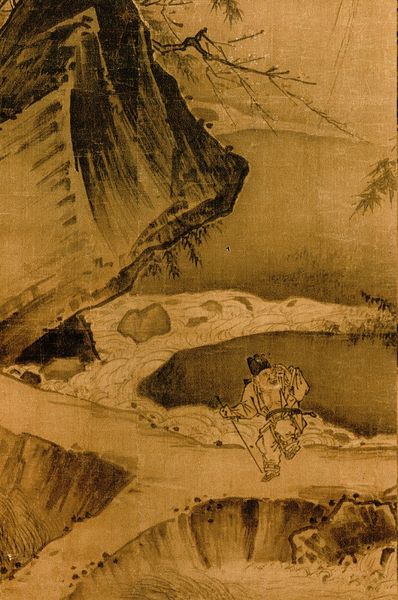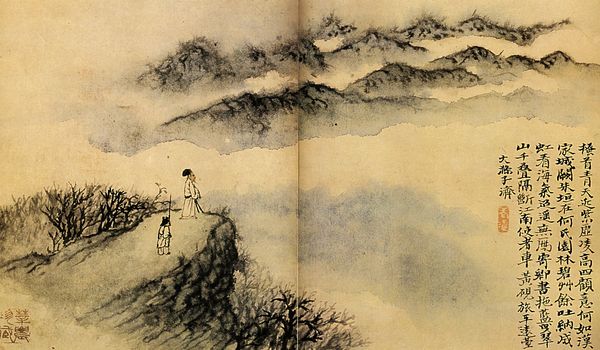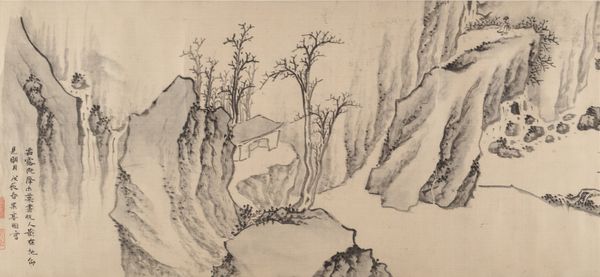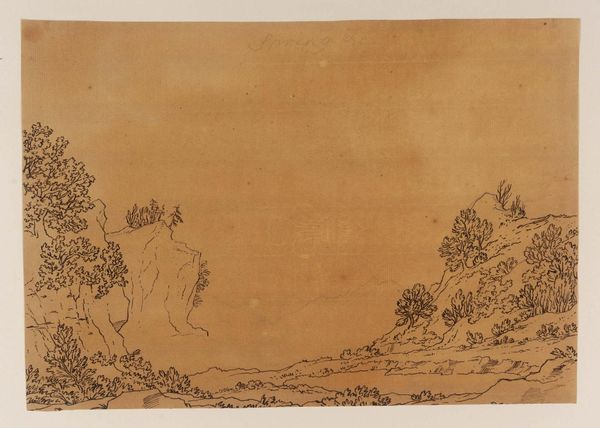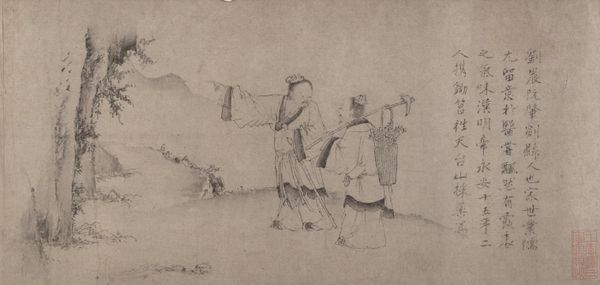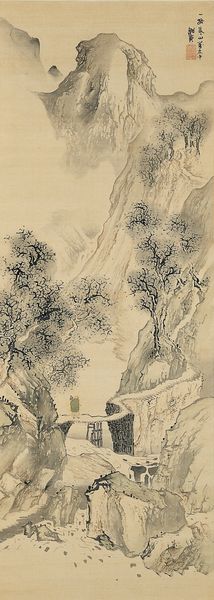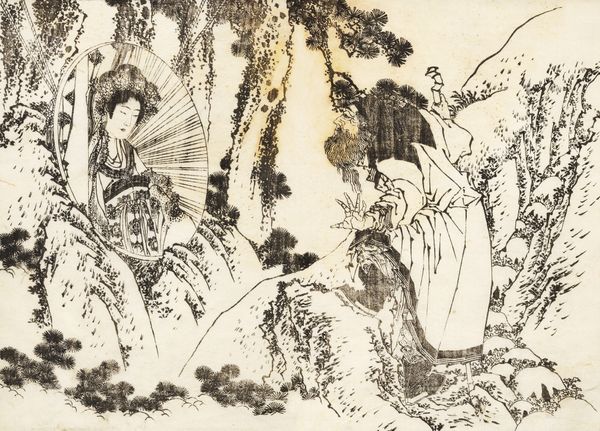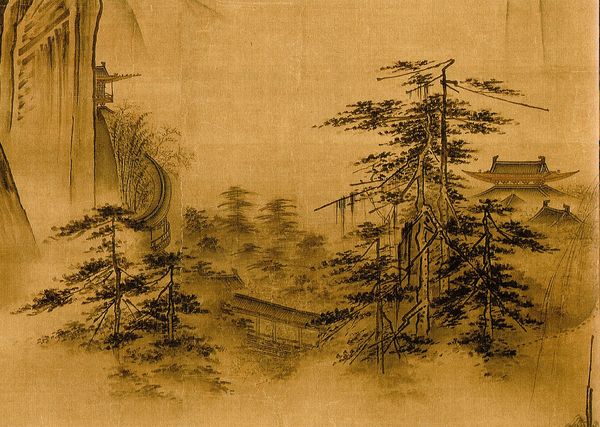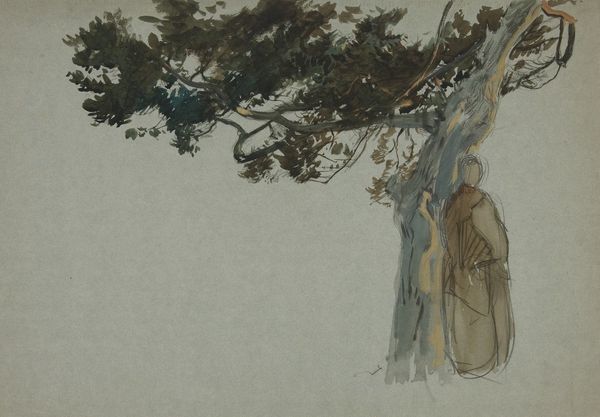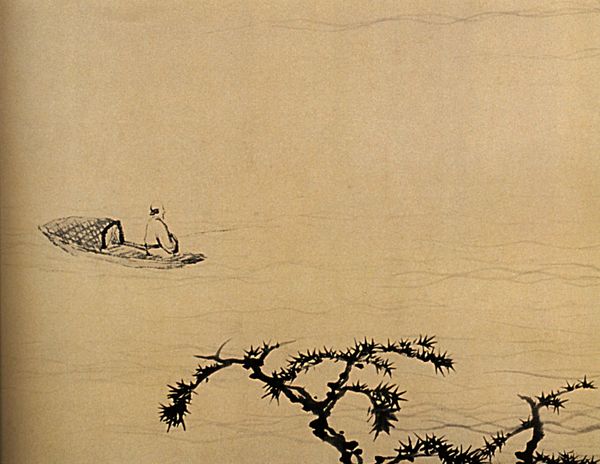
painting, ink
#
ink painting
#
painting
#
asian-art
#
landscape
#
figuration
#
ink
#
line
#
realism
Dimensions: 27.4 x 43.1 cm
Copyright: Public domain
Editor: This is "Walking on a Mountain Path in Spring," an ink painting by Ma Yuan from about 1190. I’m struck by the sparseness, how much is suggested rather than explicitly shown. What captures your attention when you look at it? Curator: For me, the interest lies in how the materiality itself—ink on silk—conveys social and philosophical values. The limited palette, the starkness… it speaks to a specific mode of elite production, a cultivated aesthetic. Editor: How so? Curator: Think about the cost and skill involved in creating the ink, grinding it, preparing the silk. This wasn’t mass-produced. It reflects the literati culture of the Southern Song Dynasty – a society focused on refined tastes. We can look at the choice to represent this subject, but more importantly, the means by which the painting becomes a cultural symbol of wealth and power through access to tools and refined taste. Editor: That's a fascinating way to frame it. I tend to focus on the content – the lone figure contemplating nature – but you’re drawing attention to the material conditions that made the image possible. Is the lack of color significant here, speaking about restraint for example? Curator: Absolutely. Restraint, refinement, detachment from the vulgar – all these ideals are manifested in the physical act of using ink in this way, in this moment. What are your thoughts on the empty space, a stylistic element with deep roots in Taoism? It has physical consequence too. What's it printed on? What happens to it next? The painting may suggest a harmony with nature, but it’s equally a statement about human artifice and control. Editor: That makes me think about how this work, originally enjoyed by a privileged elite, is now displayed in a museum. That shift in context really changes how we see the relationship between art and society. Curator: Exactly! We have to think about how it’s made, what’s on it, where it ends up, and how its value transforms over time through consumption.
Comments
No comments
Be the first to comment and join the conversation on the ultimate creative platform.


